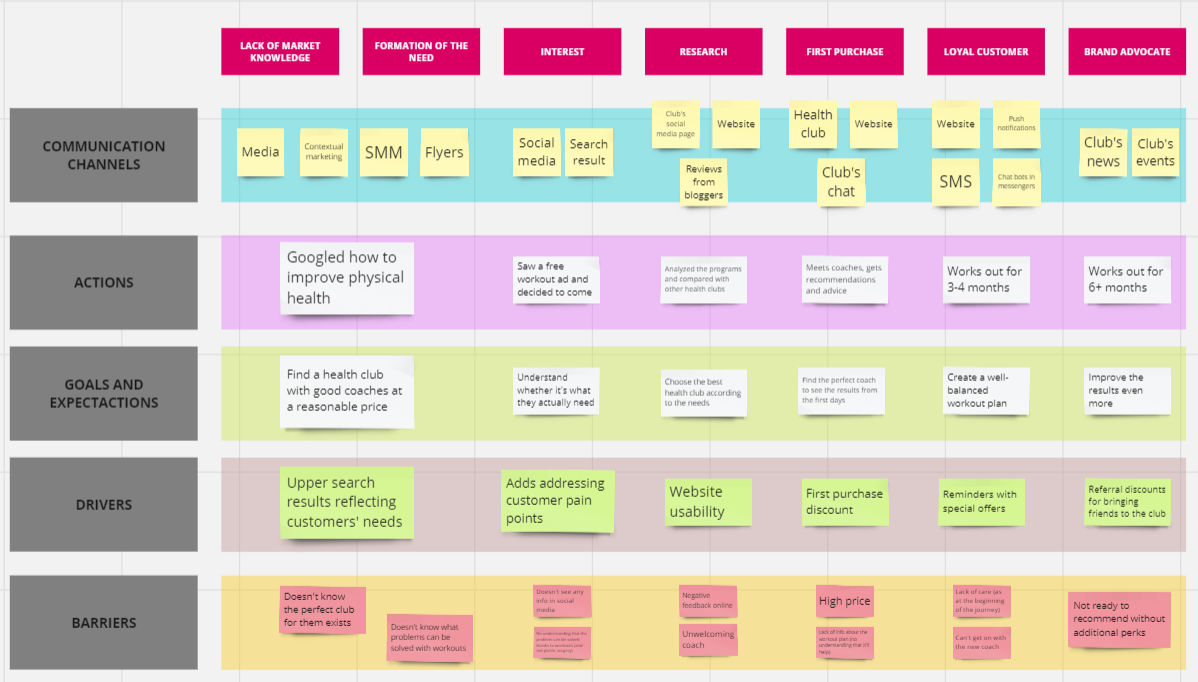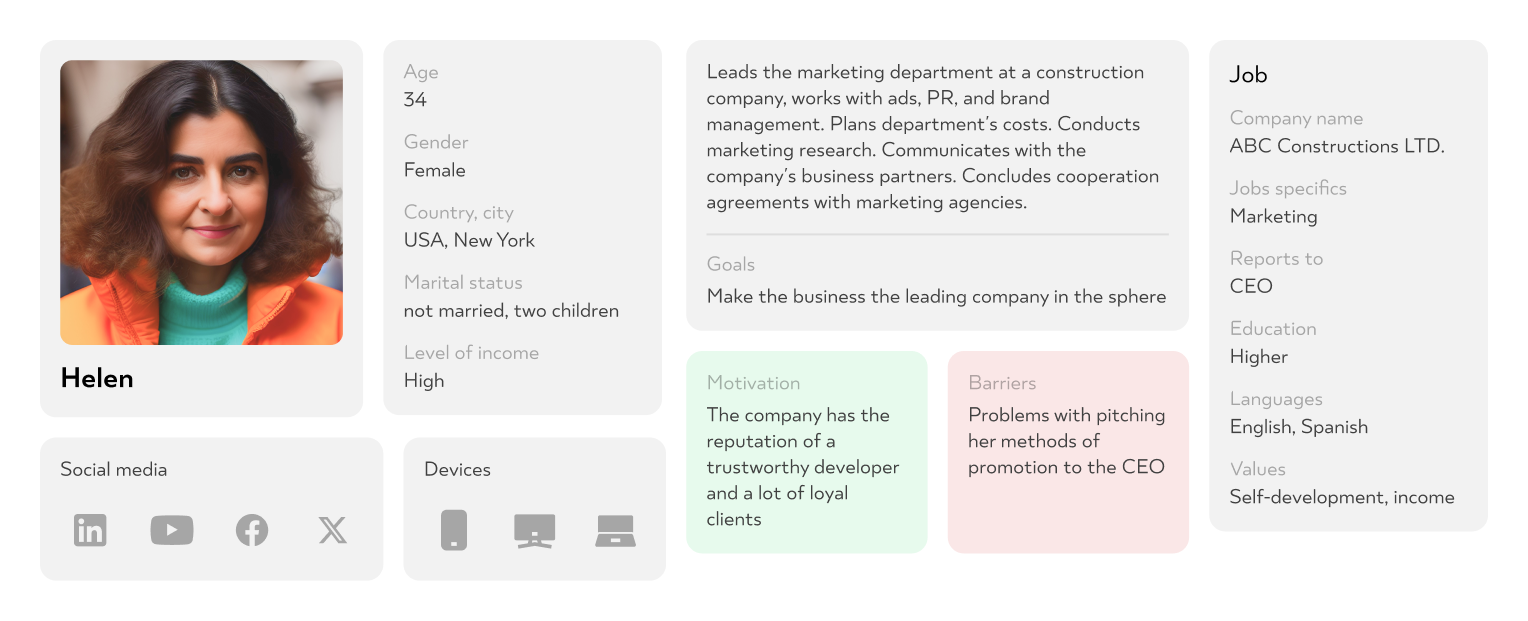How to Build a Customer Journey Map If Customer Needs Are Not Identified
Marketers build Customer Journey Maps (CJMs) to see how customers behave from the moment they first need the product till they finally buy it. But what if your product can solve the problems your potential clients haven’t thought of yet?
Why customer needs are essential for building a CJM
I think all of us had at least one situation when a company or a brand offered us something that made us think: “Wow, that’s just what I need!” Even if we hadn’t clearly understood the need for the product until that moment. Those far from marketing may think that such offers are nothing but a coincidence. However, seasoned marketers will be safe to say that it’s just a powerful sales funnel: identifying customer pain points at the right time and place based on clients’ goals, motives, emotions, and previous experience.
A CJM helps marketers find the challenges customers face and come up with relevant offers and solutions.
Here’s an example of a CJM for a health club’s client without a clear need at the beginning of their journey:

The most important rule here is to keep your CJM centered around the customer. You should collect relevant client data to understand your customers’ requirements, preferences, disappointments, and the reasons behind their problems.
To make sure all the information you get is relevant, put some effort into formulating the right questions. For example, if you provide email marketing services, some of the things you could ask potential clients would be:
- “How did you understand that you needed email marketing campaigns?”
- “What problems did you want to solve with their help?”
- “Did you manage to solve those problems?”
- “What difficulties did you have when you were searching for a solution?”
What to do when customer needs are not identified
If you don’t know what exactly your customers want, analyze other client details and concentrate on solving local issues clients might have on their way to a purchase (and becoming a brand advocate).
Let’s discuss which parts of the CJM should be your main priority when working with such clients and how to organize the process better.
Build customer personas
A customer persona is a representation of your ideal customer including their distinctive characteristics, preferences, and so on. The number of customer personas varies depending on the brand specifics. To identify your typical buyer personas, use qualitative and quantitative research, surveys, CustDev, and other methods of analyzing your audience.
Start with breaking your audience down into the main segments and formulate hypotheses on the characteristics your typical customers have. After that, validate the hypothesis by conducting in-depth interviews with representatives of various segments. This way, you’ll get relevant information on the clients’ goals and motives and understand what your customers think and how they feel at every stage of the customer journey.
Add this information to the customer persona cards and attach a photo of your customer persona (you can generate them using the typical customers’ characteristics and a little magic from AI tools). For better results, create separate CJMs for every customer persona you identify.
Here’s what a customer persona card may look like:

This approach requires more effort but it’s gonna be much more effective than building CJMs based on your assumptions only.
Describe communication channels
When you know who your clients are, you can easily choose relevant communication channels to communicate your products or services in the right way from the get-go. For example, members of Gen Z are much more likely to respond to social media promotion and rely on the opinion of the bloggers and celebrities they follow a lot. On the contrary, older customers tend to analyze all the information they can find on the products/services on the web: detailed reviews, customer feedback, and so on.
After you choose the main channels of communication, think through the methods of communication you’ll use: videos, email campaigns, contextual marketing, articles to your blog, etc.
Here’s an example of communication channels on a CJM:

Describe the stages of the customer journey
The number of the stages may vary but we tend to single out 6 steps customers go through on their way to becoming brand advocates:
- Need;
- Interest;
- Research;
- First purchase;
- Loyal customer;
- Brand advocate.
Write down customers’ goals and expectations for every step of the way: this will help you deal with local issues depending on the stage of the customer journey.
Here’s an example of the goals and expectations of health club customers at various stages of the customer journey:

Identify barriers on a customer journey and find ways to overcome them
Barriers are things that prevent people from making a purchase: high prices, poor customer service, negative feedback, etc. These barriers can be non-obvious: for example, inconvenient parking lots or an unpleasant voice of a customer support specialist. Such details may be extremely hard to predict and that’s why they should come directly from your real customers.
For every step of the customer journey, find several ways customers can use to overcome the possible barriers and become your loyal client.
In the example below, you can see possible barriers on the customer journey of a health club client:

Think out marketing drivers
Drivers help people move to the next stage of the customer journey: discounts, customer feedback, bonus points, etc. Drivers vary depending on the customers’ goals on every stage of the way: for example, if your clients want to save money, you could use discounts as the main driver. And if they want to feel part of the community, private events for the members of the community could work well. To understand what’s important for your customers, you can send out survey emails, SMS, push notifications, use social media, and other tools that will help you gather customer feedback.
Here are possible drivers of a health club client:

Wrapping up
If your potential client hasn’t understood their need for your product yet, start building CJMs with identifying your customer personas. Analyze your audience, define who your clients are and what communication channels are best to reach them. Use these channels to distribute information that will help your future customers solve their problems.
For every stage of the CJM, think out the following details:
- the barriers your clients may come across;
- the ways to overcome these problems;
- possible drivers that could take customers to the next level of the CJM.
When all the components of your potential customer communications are added to a map, you’ll see potential bottlenecks on a customer journey. A CJM will show what you do right and what you can improve to help customers understand their needs, make an informed decision, and take an action.
 Photo by Joris Beugels on Unsplash
Photo by Joris Beugels on Unsplash

 How to resolve AdBlock issue?
How to resolve AdBlock issue? 
 Ivan Ilin,
Ivan Ilin,